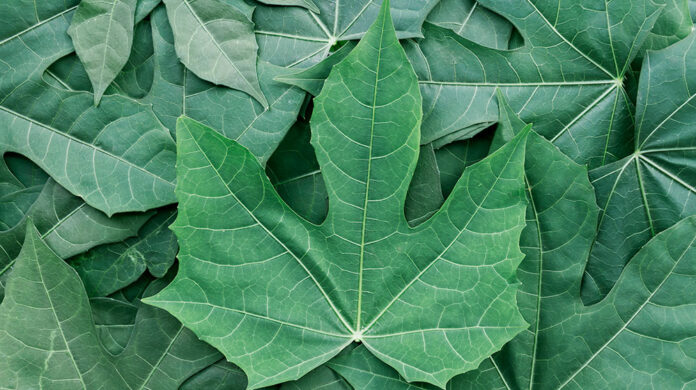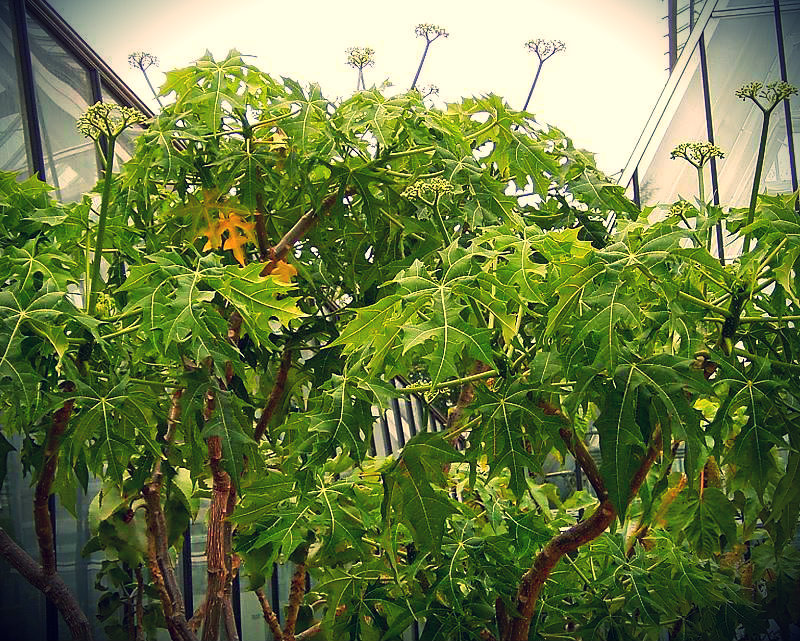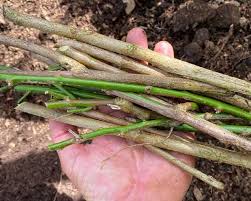What is Chaya?
Chaya, also known as “tree spinach”, is a perennial shrub and an excellent source of vitamins, fiber, proteins and enzymes. Chaya was long used by the Mayans of the Yucatan Peninsula as a food crop and a medicinal plant. The name “chaya” is derived from the Mayan name “chay”. Chaya still comprises the main dietary source of leafy vegetables for the indigenous people of Yucatan peninsula of Mexico and Kekchi people of Alta Verapaz in Guatemala.
It’s perennial, drought tolerant and can grow with little care. Chaya is also highly disease and pest resistant. However, it must be cooked before eating due to hydrocyanic glycosides. Cooking chaya in boiling water for five minutes or frying rids the stems and leaves of the poisonous cyanide components. I’m not aware of any reports of acute or chronic cyanide poisoning from chaya, but just to be safe, cook it first. The broths are also safe to drink and rich in vitamin C. You can read on the full Chaya plant and nutrient profile here.
These are 2 main Chaya varieties pictured below.

Cnidoscolus chayamansa – Maple leaf variety

Cnidoscolus aconitifolius – Star Variety
Health Benefits of Chaya
- Improved nutrition: Chaya is a good source of many essential nutrients, including protein, vitamins, and minerals. This makes it a valuable food source for people who may be at risk of malnutrition, such as pregnant women, children, and the elderly.
- Reduced inflammation: Chaya contains antioxidants and other compounds that can help to reduce inflammation throughout the body. Inflammation is thought to play a role in many chronic diseases, such as heart disease, cancer, and arthritis.
- Boosted immunity: Chaya is a good source of vitamin C, which is important for a healthy immune system. Vitamin C helps the body to produce white blood cells, which fight infection.
- Stronger bones: Chaya is a good source of calcium and vitamin K, both of which are important for bone health. Calcium helps to build and maintain strong bones, while vitamin K helps the body to absorb calcium.
- Improved digestion: Chaya is a good source of dietary fiber, which is important for digestive health. Dietary fiber helps to keep the digestive system healthy and regular.
- Reduced risk of heart disease: Chaya contains antioxidants and other compounds that can help to protect the heart from damage. Chaya may also help to lower cholesterol levels and improve blood pressure.
- Cancer prevention: Some studies have shown that chaya may have cancer-fighting properties. Chaya contains compounds that can inhibit the growth and spread of cancer cells.
In addition to its health benefits, chaya is also a versatile and delicious plant. The leaves can be eaten raw, cooked, or dried. Chaya can be added to salads, soups, stews, and stir-fries. It can also be baked, roasted, or mashed.
Chicasquil in Costa Rica
In Costa Rica, chaya is known as “chicasquil”. It’s used in a tradition Costa Rican dish called Picadillo de Chicaquil. The traditional picadillo chicasquil, is one of the activities most awaited by the people in the province of Escazú during the festivities of San Miguel Arcángel, patron saint of the central district of the canton. Unfortunately, most locals I’ve spoken with in Guanacaste only know it as an ornamental or living fence-line. (It seems crazy to have a nutritional powerhouse like Chaya growing on your fence-line and never eating it.)
👇Video of Making Picadillo de Chicaquil in Costa Rica. YUM!👇
Buy Chaya cuttings here
How To Grow Chaya
Chaya is a year-round source of high-quality food in that grows in a wide range of conditions. This Survival Crop could be of the most important edible-leaved plants in the tropics.
Chaya is easily propagated by stem cuttings. Make a 6-12 inches cutting from a woody part of the stem and be sure that there are at least a few nodes on the cutting. Remove all leaves and let the cutting air dry for a 2-3 days. This will allow the cut ends to seal, making them less susceptible to rotting. If you’ve ever propagated moringa, the process is much the same.
 When you’re ready, put the cuttings in the ground with 1-2 nodes under the soil and keep moist. Don’t over water, or the cutting will rot. You can also start them in pots or starter buckets first and the transplant them if you’re concerned about them rotting. Chaya is cold sensitive and should be started at the beginning of a warm season. It does fine as an understory shaded plant, so northerners may be able to grow them indoors and bring them outside in the spring.
When you’re ready, put the cuttings in the ground with 1-2 nodes under the soil and keep moist. Don’t over water, or the cutting will rot. You can also start them in pots or starter buckets first and the transplant them if you’re concerned about them rotting. Chaya is cold sensitive and should be started at the beginning of a warm season. It does fine as an understory shaded plant, so northerners may be able to grow them indoors and bring them outside in the spring.
Chaya is kept to a height of 4-5 ft (1.5 m) for easy harvesting. Continuously harvesting the tender shoots and young leaves for consumption will keep the plant at the desired height. The plant can be cut back periodically to height of 20 inches (50 cm) to promote the production of tender shoots and young leaves. The plant residue can be left around the base of the plant for soil enrichment and weed control. And don’t worry…..this plant can handle neglect! I had one I totally forgot about for 2 years. It made it through 2 dry seasons!
It’s n amazing plant! I’ll have some videos on Chaya once I get more propagated. For now, check it out and others like it in the Perennial Vegetables section of the Survival Plant Database



GIPHY App Key not set. Please check settings